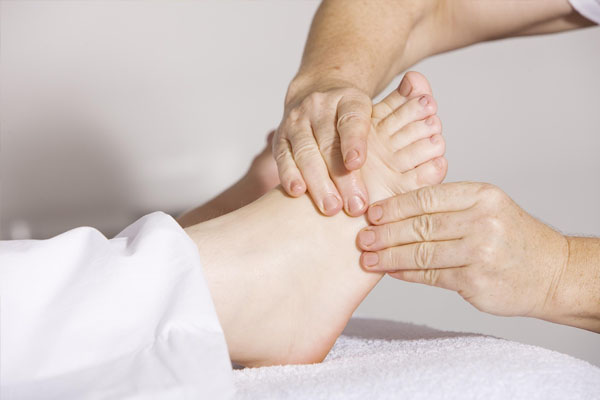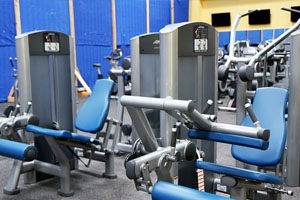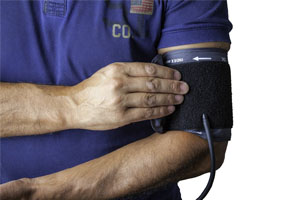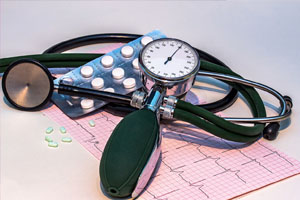Discover the potential benefits of reflexology for pain relief, stress reduction, and overall well-being Learn about the scientific evidence, common questions, and concerns addressed by qualified reflexologists Find out how reflexology can enhance your physical and mental health Gain a deeper understanding of this complementary therapy to achieve Topical Authority in the field of reflexology
Reflexology is a practice that has gained popularity in recent years for its potential health benefits. In this article, we will explore the question: "Does reflexology really work?" Before diving into the topic, let's first understand what reflexology is all about.
Reflexology is a complementary therapy that involves applying pressure to specific areas of the feet, hands, or ears, known as reflex points. These reflex points are believed to correspond to different organs, systems, and parts of the body. The underlying principle is that by applying pressure to these reflex points, it can stimulate energy flow, promote relaxation, and potentially improve overall well-being.
Throughout history, reflexology has been practiced in various cultures around the world, with its roots dating back thousands of years. It is based on the belief that the body is interconnected, and by working on specific reflex points, it is possible to influence the corresponding body parts and restore balance.
In the following sections, we will delve deeper into the principles of reflexology, explore its potential benefits, examine the scientific evidence supporting its effectiveness, and address common questions and concerns. By the end of this article, you will have a better understanding of whether reflexology truly lives up to its claims.
Now, let's proceed to the next section, where we will uncover the principles underlying reflexology.

Understanding the Principles of Reflexology
In order to grasp the effectiveness of reflexology, it's important to comprehend its underlying principles. Let's explore the definition and origins of reflexology, as well as how it works.
1. Definition and Origins of Reflexology
Reflexology is an ancient practice that can be traced back to ancient Egypt, China, and India. It is based on the belief that specific reflex points on the feet, hands, and ears correspond to different organs, glands, and body parts. By applying pressure to these reflex points, it is believed that energy flow can be stimulated, helping to restore balance and promote healing.
The term "reflexology" was coined in the early 20th century by Eunice Ingham, an American physiotherapist. Ingham developed the modern reflexology map, which outlines the reflex points on the feet and their corresponding body parts. This map serves as a guide for reflexologists to target specific areas during a session.
2. How Reflexology Works
Reflexology operates on the premise that the body is divided into zones that run from the head to the feet. These zones are believed to be interconnected, and each zone corresponds to specific reflex points on the feet. By applying pressure to these reflex points, it is thought that the corresponding body parts and systems are stimulated.
Reflexologists use various techniques, such as thumb or finger pressure, kneading, and rotation, to work on the reflex points. The pressure applied can range from gentle to firm, depending on the individual's tolerance and the reflexologist's assessment.
The aim of reflexology is to promote relaxation, improve circulation, and support the body's natural healing processes. By stimulating the reflex points, it is believed that energy blockages can be released, allowing for improved energy flow and overall well-being.
Now that we have covered the principles of reflexology, let's move on to the next section, where we will explore the potential benefits of this practice.
Exploring the Potential Benefits of Reflexology
Reflexology is believed to offer a range of potential benefits for physical and mental well-being. In this section, we will explore some of the key benefits associated with reflexology.
1. Pain and Stress Relief
One of the primary reasons individuals seek reflexology is for pain relief. Reflexology is thought to stimulate the release of endorphins, which are natural pain-relieving hormones. By targeting specific reflex points, reflexologists aim to alleviate pain and discomfort in corresponding body parts.
Additionally, reflexology is known for its relaxation-inducing properties. The gentle pressure applied during a session can help reduce stress and promote a sense of calm. The relaxation response triggered by reflexology may have a positive impact on overall well-being and help manage stress-related conditions.
2. Improved Circulation and Toxin Removal
Reflexology is believed to have a positive effect on blood circulation. By applying pressure to reflex points, it is thought to enhance blood flow to specific organs and body systems. Improved circulation can aid in delivering oxygen and nutrients to cells while removing waste products more efficiently.
Furthermore, reflexology is often associated with the elimination of toxins from the body. By stimulating the reflex points, it is believed that the lymphatic system, responsible for filtering toxins, may be activated. This potential detoxification effect can contribute to improved overall health and vitality.
3. Enhancing Overall Well-being
Beyond pain relief and stress reduction, reflexology is known for its potential to enhance overall well-being. Many individuals report feeling a sense of rejuvenation, improved sleep quality, and increased energy levels following reflexology sessions.
Moreover, reflexology is believed to have a holistic impact on the body, mind, and spirit. It is thought to support the body's natural healing mechanisms and promote a state of balance and harmony.
Now that we have explored some of the potential benefits of reflexology, let's proceed to the next section, where we will examine the scientific evidence supporting its effectiveness.
Examining the Scientific Evidence
While reflexology has gained popularity as a complementary therapy, it is important to examine the scientific evidence to determine its effectiveness. In this section, we will provide an overview of reflexology research and discuss the findings and limitations of studies conducted in this field.
1. Overview of Reflexology Research
Over the years, several studies have investigated the effects of reflexology on various health conditions and outcomes. These studies have employed different methodologies, including randomized controlled trials (RCTs), observational studies, and systematic reviews.
Researchers have explored the potential benefits of reflexology for conditions such as pain management, stress reduction, pregnancy-related discomforts, and more. Additionally, studies have examined reflexology's impact on physiological measures, such as blood pressure, heart rate, and hormone levels.
2. Study Findings and Limitations
While some studies have reported positive outcomes and benefits associated with reflexology, it is important to acknowledge the limitations and inconsistencies in the available research.
Many studies on reflexology have small sample sizes, making it challenging to draw definitive conclusions. Additionally, the lack of standardized protocols and variations in the techniques used by different reflexologists may contribute to variations in study outcomes.
Furthermore, some studies have reported placebo effects, suggesting that the relaxation and attention received during a reflexology session may contribute to perceived benefits, rather than the specific effects of reflexology itself.
It is worth noting that the scientific evidence on reflexology is still evolving, and more high-quality research is needed to establish its effectiveness and mechanisms of action.
Now that we have examined the scientific evidence, let's move on to the next section, where we will address common questions and concerns related to reflexology.
Addressing Common Questions and Concerns
As with any practice, reflexology raises questions and concerns among individuals who are considering trying it or seeking more information. In this section, we will address some common questions and concerns related to reflexology.
1. Is Reflexology Safe?
Reflexology is generally considered safe when practiced by trained and qualified reflexologists. However, it is essential to communicate openly with your reflexologist about any pre-existing medical conditions, allergies, or concerns you may have. This will help ensure that the session is tailored to your specific needs.
If you are pregnant, have a foot injury, or have certain medical conditions, it is advisable to consult with your healthcare provider before undergoing reflexology.
2. How Many Sessions of Reflexology Are Needed?
The number of reflexology sessions needed can vary depending on individual circumstances and goals. Some individuals may experience immediate benefits after a single session, while others may require multiple sessions to notice significant changes.
Your reflexologist can provide guidance on the recommended frequency and duration of sessions based on your specific needs and goals. It is important to approach reflexology with realistic expectations and be open to the process of gradual improvement.
3. Can Reflexology Cure Specific Conditions?
Reflexology is not intended as a cure for specific medical conditions. It is a complementary therapy that aims to support overall well-being and promote relaxation. While some individuals may experience symptom relief or improvements in specific conditions, reflexology should not replace medical treatment or professional advice.
If you have specific health concerns or medical conditions, it is important to consult with your healthcare provider for appropriate diagnosis, treatment, and management.
4. How Do I Find a Qualified Reflexologist?
When seeking a reflexologist, it is important to choose a qualified practitioner who has received proper training and certification. Look for reflexologists who are members of reputable professional associations or organizations. These associations often have strict standards for education, training, and ethical practice.
Additionally, you may consider seeking recommendations from trusted healthcare professionals or individuals who have had positive experiences with reflexology.
Now that we have addressed common questions and concerns, let's proceed to the conclusion of this article.
QA (Questions and Answers)
In this section, we will provide answers to some frequently asked questions about reflexology.
Q1: How long does a reflexology session typically last?
A1: A reflexology session usually lasts between 30 minutes to an hour. The duration may vary depending on individual needs and preferences.
Q2: Is reflexology painful?
A2: Reflexology should not be painful. While you may experience some discomfort or sensitivity in certain areas, the pressure applied during a session should be adjusted to your comfort level. It is important to communicate with your reflexologist about any discomfort you may feel during the session.
Q3: Can reflexology be performed on other body parts besides the feet?
A3: Yes, reflexology can be performed on the hands and ears as well. The reflex points on the hands and ears correspond to different organs and body parts, similar to those on the feet. Hand or ear reflexology may be offered as an alternative or in combination with foot reflexology.
Q4: Can reflexology help with sleep problems?
A4: Reflexology has been reported to have a relaxing effect and may help promote better sleep. By reducing stress and inducing relaxation, reflexology sessions may contribute to improved sleep quality. However, individual results may vary, and it is important to address any chronic sleep problems with a healthcare professional.
Q5: Can I perform reflexology on myself?
A5: While it is possible to perform some self-reflexology techniques, it is generally recommended to seek the assistance of a trained reflexologist for a more effective and comprehensive session. Reflexologists have a deeper understanding of the reflex points and techniques to target specific areas properly.
Now that we have answered some commonly asked questions, we will conclude this article. If you have any further inquiries, we encourage you to consult with a qualified reflexologist or healthcare professional.










